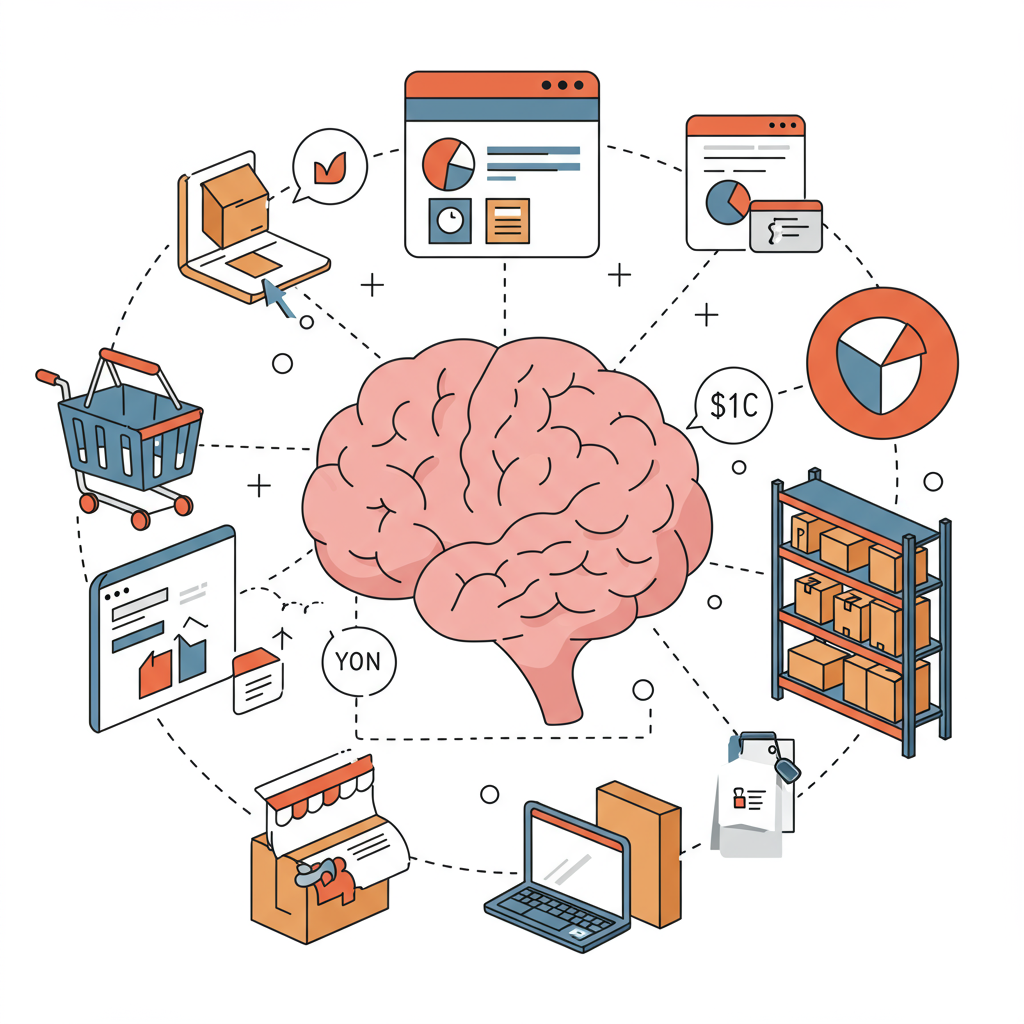Say Goodbye to Stockouts and Overstocking with Smart Demand Prediction
As a Shopify merchant, I know firsthand the exhilarating highs of a successful product launch and the crushing lows of missing out on sales due to stockouts.
I also understand the silent drain of capital tied up in excess inventory, gathering dust in a warehouse.
These are the twin demons of e-commerce: stockouts and overstocking. They erode profits, frustrate customers, and stifle growth.
For too long, managing inventory has felt like a guessing game, relying on intuition, historical spreadsheets, and a bit of crossed fingers.
But what if I told you there’s a powerful solution that can transform this chaotic process into a precise, data-driven science?
I’m talking about AI-powered inventory forecasting, and it’s rapidly becoming the secret weapon for smart Shopify businesses.
Let’s first acknowledge the pain points we’ve all experienced. Stockouts mean lost sales, plain and simple. A customer wants to buy, but the item isn’t available.
They’ll likely go to a competitor, and you’ve not only lost that sale but potentially a loyal customer. This directly impacts your bottom line and brand reputation.
On the flip side, overstocking isn’t just about having too much stuff. It’s about capital being trapped in inventory that isn’t moving.
This ties up cash that could be used for marketing, product development, or other growth initiatives. It also incurs carrying costs like storage, insurance, and potential obsolescence.
Traditional inventory methods, often manual or based on simple averages, simply cannot keep up with the dynamic nature of online retail.
They struggle to account for seasonality, promotional impacts, sudden trends, or even external factors like economic shifts or social media virality.
So, what exactly is AI-powered inventory forecasting? At its core, it’s the application of machine learning algorithms to predict future demand for your products with remarkable accuracy.
Instead of just looking at last year’s sales, AI models analyze vast datasets. This includes your historical sales data, but also external factors like weather patterns, holidays, marketing campaigns, and even competitor activity.
These algorithms identify complex patterns and correlations that are invisible to the human eye, learning and adapting over time to provide increasingly precise predictions.
For Shopify merchants specifically, this technology is a game-changer. Your store generates a wealth of data, and AI thrives on data.
Integrating an AI forecasting solution with your Shopify store means leveraging this existing data to make smarter purchasing and stocking decisions.
It allows you to scale your operations confidently, knowing you’ll have the right products in the right quantities at the right time, without the manual overhead.
The benefits for your Shopify store are truly transformative. First, and perhaps most critically, it helps you virtually eliminate stockouts.
Imagine never having to tell a customer an item is out of stock again. This leads to higher conversion rates, increased customer satisfaction, and a stronger brand image.
Secondly, it drastically reduces overstocking. By predicting demand accurately, you can order only what you need, when you need it.
This frees up significant working capital, reduces storage costs, minimizes waste from obsolete inventory, and improves your overall cash flow.
Beyond these direct financial impacts, AI forecasting streamlines your entire operational workflow. It automates the tedious process of demand planning, freeing up your time and resources.
You can shift your focus from reactive problem-solving to proactive growth strategies, like optimizing marketing spend or exploring new product lines.
It empowers you to make truly data-driven decisions, moving away from gut feelings and towards actionable insights. This means more strategic purchasing, better supplier negotiations, and optimized pricing.
Furthermore, AI models are constantly learning. They adapt to new trends, unexpected surges in demand, or even dips, allowing your business to remain agile and responsive in a fast-paced market.
Integrating these solutions with Shopify is typically straightforward, thanks to the robust Shopify App Store and API ecosystem. Many apps offer seamless, one-click integration.
When choosing an AI forecasting solution, I recommend looking for features like high predictive accuracy, intuitive dashboards, easy integration with Shopify, and comprehensive reporting.
Scalability is also key; ensure the solution can grow with your business. Don’t forget to consider customer support and the quality of their onboarding process.
Implementing AI forecasting isn’t an overnight magic bullet, but it’s a strategic investment. It starts with assessing your current data quality and choosing the right partner.
Once integrated, the AI will begin to learn from your historical data. It’s crucial to monitor its performance and provide feedback to refine its predictions over time.
While AI is powerful, it’s not a “set it and forget it” tool. It requires human oversight and strategic input, especially during major promotional events or unforeseen market shifts.
The future of inventory management for Shopify merchants is undoubtedly AI-driven. It’s about moving from reactive to predictive, from guesswork to precision.
It’s about unlocking new levels of efficiency, profitability, and customer satisfaction that were previously unattainable.
I genuinely believe that embracing AI-powered inventory forecasting is no longer a luxury but a necessity for any Shopify merchant serious about sustainable growth.
It’s time to take control of your inventory, optimize your cash flow, and delight your customers consistently.
What do you think about the potential of AI to transform inventory management for Shopify stores? I’d love to hear your thoughts.






